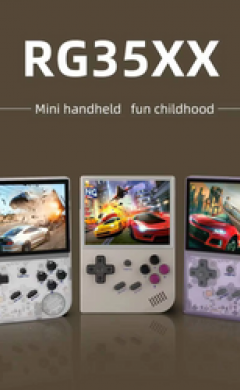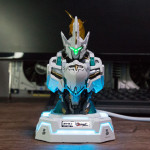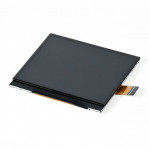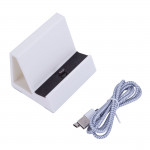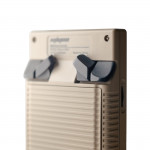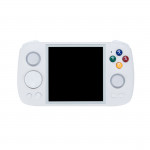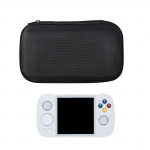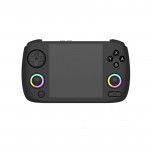KTR1 – Game On or Game Over?
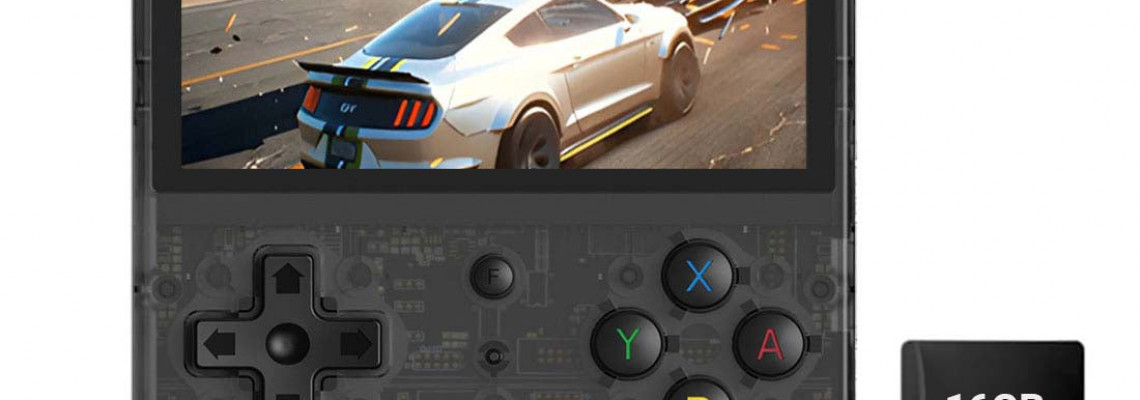
KTR1 – Game On or Game Over?
The KTR1 is a gadget you should know if you're a die-hard retro gaming fan. If you haven't used this device yet, get ready to explore a whole new gaming realm. Once a rumour, the KTR1 is now in players' hands, igniting discussions about its potential and position within the emulation universe. Based on our gaming experiences, we will discuss our thoughts and observations about the KTR1 in this review. Get ready for an old-school gamer's viewpoint!
Gaming Gear Galore
So many options are available with the KTR1 that it would be overwhelming for any gamer. It resembles a buffet of choices. Do you want to change where the D-pad and analog stick are located? You got it. Would you like a plastic or metal shell—though metal isn't readily available now? Choose. The options don't end there, though. An MTK Helio G99 (2x A76 & 6x A55 cores) and a Mali G57 MC2 GPU are included with the KTR1. The RAM and storage variants come next, with the base model having 4GB of RAM and 64GB of storage, the mid-tier having 6GB of RAM and 128GB of storage, and the top-tier variant having an incredible 8GB of RAM and 256GB of storage. It has a powerful 7000mAh battery, which ensures you can play games while on the run. I went all out with the 8GB model for this evaluation.
First Impressions from a Gamer's Lens
Because of that 7000mAh battery, the KTR1 is heavy when opening the box. I quickly used a button check, and the outcomes were... passable. The top trigger buttons lacked the firm click of other gaming devices, such as Retroid or Anbernic, and seemed fragile. Despite being somewhat smaller, the thumbsticks provided a complete range of motion. Although it was excellent, the brightness of the 1080p screen was lacking. Although the "super dim" option was helpful for late-night gaming sessions, as it prevented me from waking my sleeping companion, it still had trouble shining outside, even at maximum brightness. I had a significant resemblance to RG503 when I felt the tactile feedback of the face buttons against the shell. Despite several consumers reporting quality control issues, my item appeared to fare better, with no significant concerns. The speakers were powerful and produced loud sounds. The shoulder buttons on top did rattle a little, but the sturdy shell kept everything together.
KTR1 vs. T618 Competition: Battle of the Chips
Any device using a Unisoc T618 chip is the KTR1's closest competitor, and several options are available. Even though the KTR1's hardware is superior to the T618, there isn't much of a performance difference. Both chips easily handle games from the PSP era. Taking on games on the GameCube and PlayStation 2 is the actual test. The KTR1 does have a tiny advantage in that area because it can run a few more games than its T618 siblings. However, declaring a decisive win is insufficient. We'll talk more about gameplay soon.
Showdown of the Handhelds: KTR1 vs RG505 vs RG405M
I contrasted the KTR1 with its relatives in a titanic battle, the RG505 and RG405M. The main points of emphasis were size, button arrangement, tactile feel, and distinctive design. To determine which features were appropriate, I conducted a thorough analysis of each device's overall appearance, button functionality, ergonomic design, and physical construction. This event went beyond technology; it attempted to combine form, function, and style most efficiently.
KTR1 vs RG505: A Step Up
KTR1 is thinner than RG505 but is just as thick. However, KTR1's sticks protrude, putting one's pocket at risk. With additional mapping buttons for home and back functionalities, KTR1 excels in button layout. And those speakers that face forward? A complete victory over the downward speakers of the RG505. Although RG505 possesses Anbernic's trademark button wizardry, KTR1 maintains its lead through innovation. How these gadgets fit in your hands is more important than their specifications. The KTR1 has an advantage in the tactile gaming experience since it is more ergonomic and makes it simpler to grasp and reach those shoulder buttons.
KTR1 vs RG405M: A Tight Fight
Another Anbernic favourite is competing against the KTR1 here. The RG405M is marginally thinner and smaller than the KTR1 in size. Although I prefer the KTR1's additional mapping buttons, the 405M makes up for it with a useful face-mounted home button. I've always loved metal shells since they feel solid and aid in heat dissipation. The 405M adds this feature, which makes it slightly heavier even with the KTR1's 7000mAh battery.
Unsurprisingly, the Anbernic-made 405M has a better button feel than the KTR1 in terms of button quality. Let's now discuss ergonomics. Although the shoulder buttons on the KTR1 and 405M are easily accessible, the KTR1's thickness offers an excellent grip, making it ideal for extended gaming sessions. Not to mention the KTR1's front-firing speakers, which are revolutionary compared to the 405 M's bottom-firing ones. The gaming experience is much enhanced when the sound is aimed directly at you.
Gaming Adventures: Can It Play That?
The long-awaited moment has finally arrived: gameplay! Everything comes together, and the crucial query is, "What can it play?" We'll divide it by console generations, starting with 8-bit and 16-bit systems.
8-Bit Delights
It's easy to run 8-bit games on the KTR1. It efficiently manages these oldies, like shooting pixelated fish in a vintage barrel. These games are ideal for a 3:2 aspect ratio screen, which minimizes side bezels for a realistic gaming experience.
16-Bit Bliss
The KTR1 still performs admirably when upgraded to 16-bit platforms. RetroArch handles these consoles with ease if you set it up. Once more, the 3:2 aspect ratio works perfectly, and the thin bezels don't take away from the game's enjoyment.
GameBoy Advance Greatness
When it comes to GameBoy Advance games, the KTR1 excels. It fits the screen well because its aspect ratio is the same as that of the GBA. It also has enough power to use the fast-forward option for blazingly quick gameplay.
PlayStation Power
The KTR1 easily handles PlayStation games and can even attain a 3–4x resolution throughout the library, thanks to its DuckStation. Even though certain games can support greater resolutions, it's best to stick to the 3–4x range because the gains lose some of their impact.
Nintendo 64 Nostalgia
The N64, which sets the standard for older chipsets, has proven challenging to imitate on vintage handhelds. You need not worry, though, because the KTR1 runs N64 games at 1080p upscale without issues!
Dreamcast Dreams
Using the premium version of Redream, which enables game upscaling, I tested the KTR1 with Dreamcast games. The outcomes were striking. With its ability to upscale games to 960p, the KTR1 offers fluid gaming and an amazing visual experience. I didn't see any noticeable slowness, even in demanding titles. However, pushing it further to 1440p was too much for the KTR1, leading to less-than-ideal performance.
Nintendo DS Dilemmas
It can be difficult to emulate the Nintendo DS on a smaller screen. Although the KTR1 efficiently manages DS games at 2x resolution, you are forced to employ the screen-swapping feature due to the small screen real estate. Turn-based or single-screen games are good, but when the screens are stacked, the lower screen becomes small and difficult to utilize.
PlayStation Portable Prowess
As the PSP tests the KTR1's boundaries, things become interesting. I have to turn on turbo mode to play most PSP games comfortably. There is letterboxing at the top and bottom due to the screen's aspect ratio not matching the PSP exactly. The screen was playable but too miniature for a perfect gaming experience, particularly in games that needed accuracy. I advise staying to 2x resolution for best results, even if certain games can be pushed to 3-4x.
Sega Saturn Struggles
When simulating the Sega Saturn, the KTR1 encounters difficulties. Although it requires some work to get Saturn games to run on the device, most perform better than their T618 counterparts. It's far from flawless, though, with sporadic frame rate drops and CPU constraints that prevent you from upgrading games. You can satisfy your Saturn itch if you're prepared to put up with a standard resolution and sporadic glitches.
GameCube Gambit
We were looking for a significant advance over the T618 in GameCube emulation, but the KTR1 only slightly beats it. I have tested various games, both with and without turbo mode. Regretfully, playable performance requires turbo mode.
Even while I could get games to run by adjusting the emulation settings, each game needed different tweaks, such as switching between OpenGL and Vulkan. For more fluid gaming, PAL roms are advised. I still had frame drops and sporadic sound distortion, which made GameCube gaming less than ideal, even with the minor performance improvement over T618. It can be played, but don't count on better graphics or the ability to unlock the whole repertoire.
PlayStation 2 Pursuit
Finally, the pièce de resistance is PlayStation 2 emulation. It's the dream of every retro gamer to have PS2 in their pocket. Does the KTR1 outshine the T618 in this department? Yes, it does. It runs better and can run several games that the T618 devices couldn't. But does it perform well enough to justify the KTR1's price tag? In my perspective, not exactly. Through careful testing, I determined that you can play a few more PS2 titles than T618 devices, but the difference doesn't justify the cost. Even with turbo mode and the top-tier KTR1, you're limited to native resolution and require substantial fiddling, just like with T618 devices. For the smoothest gameplay, opt for PAL roms wherever feasible, as they are less demanding. Many games needed underclocking to obtain usable performance while minimizing frame rate dips. Sound stuttering was also prevalent in various titles, detracting from the overall experience. If you're not keen on substantial tinkering to make your PS2 roms usable, the KTR1 may not be your ideal pick. It lacks the performance required to be a top-tier PS2 emulation handheld.
The Final Level: Conclusion
Although I'm still waiting for my metal version, I can attest to the KTR1's appeal even though our trip with it has been quite the rollercoaster. But I don't see a strong argument for choosing the more expensive models. With more promising handhelds with stronger chipsets and more enticing pricing on the horizon, the price increase doesn't seem warranted, even though the device performs slightly better in high-end console emulation. Currently, the KTR1 is a great PSP emulator with a dimmable screen. It might become a more powerful gaming device with additional chip optimization and customized firmware. However, it remains an expensive PSP emulator for now, with less costly options comparable in performance.
TL;DR:
Although it has several hardware possibilities, the retro gaming device KTR1 isn't a game-changer. While it struggles with the GameCube and PS2, it does a great job simulating earlier consoles like the GBA and PSP. Even with its potential, the more expensive models aren't worth the money; if you want one, go for one of the less expensive variants. Even though it's a good PSP emulator, other portable devices are more affordable and perform similarly. Watch upcoming gaming devices for a more hopeful handheld with improved performance.
